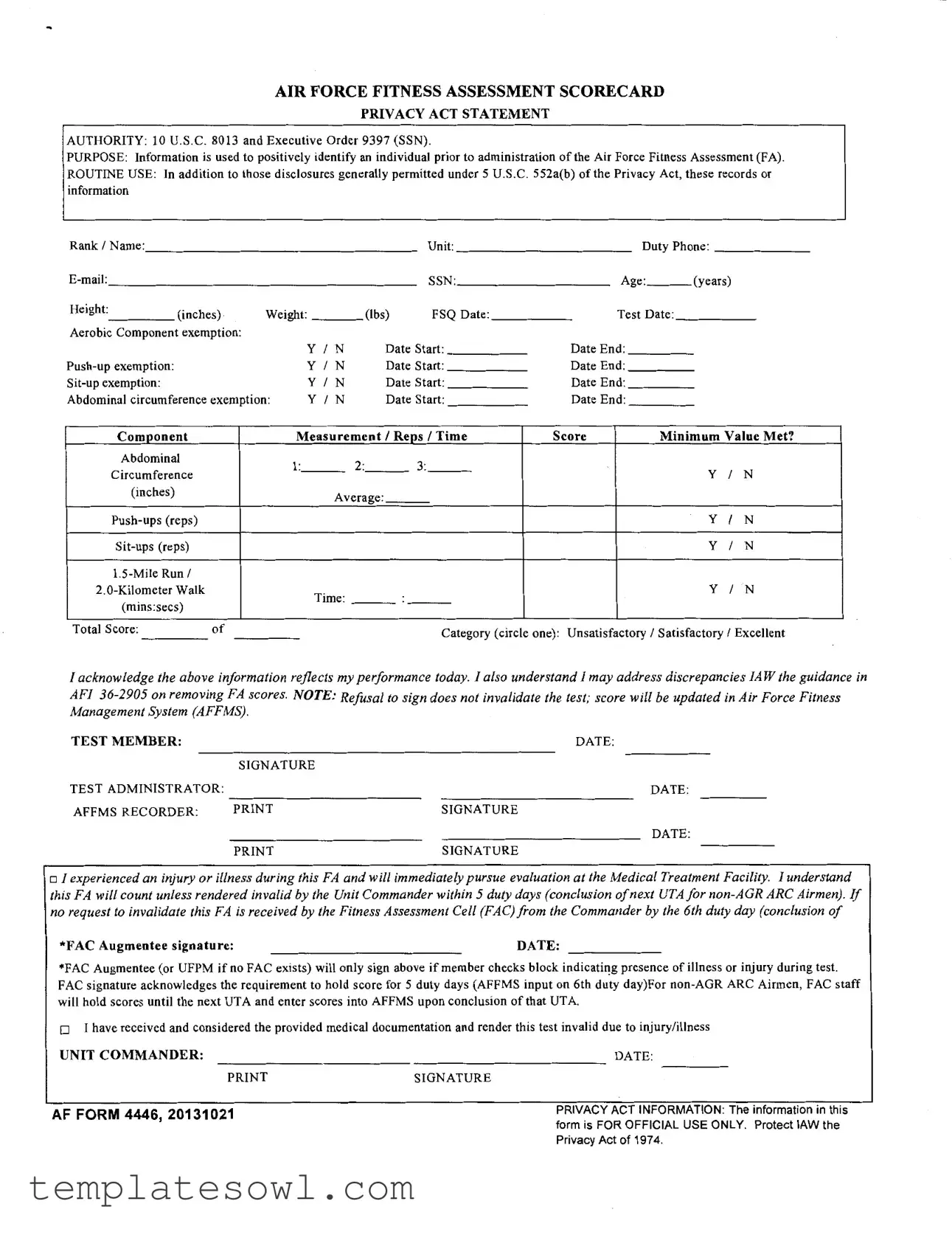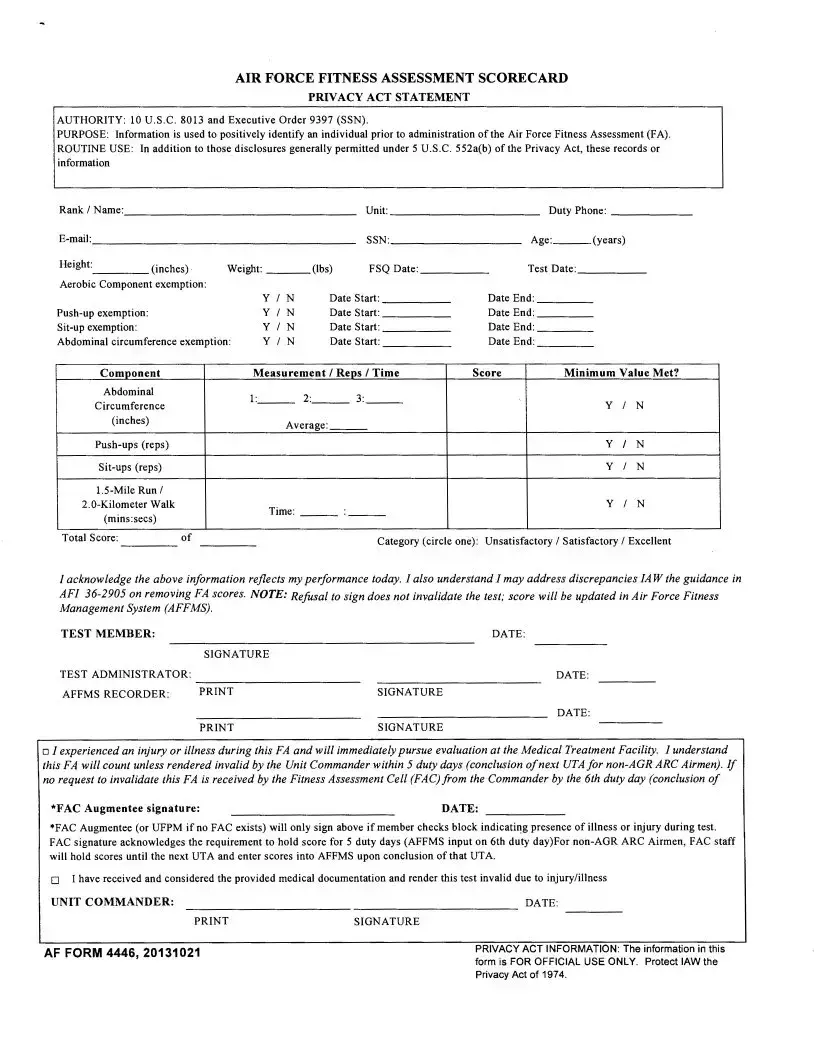What is the purpose of the AF 4446 form?
The AF 4446 form is used to collect essential information required prior to administering the Air Force Fitness Assessment. This information ensures the correct identification of individuals and facilitates the accurate recording of their fitness assessment results.
What information do I need to provide on the AF 4446 form?
You will need to provide several pieces of personal information on the AF 4446 form, including your rank, name, unit, duty phone, email, Social Security Number (SSN), age, height, and weight. Additionally, you will indicate any exemptions from specific components of the fitness assessment and provide your test scores for various exercises.
Is the information on the AF 4446 form confidential?
Yes, the information captured on the AF 4446 form is classified as FOR OFFICIAL USE ONLY and is protected under the Privacy Act of 1974. It is essential to handle this information with care and only share it with authorized personnel.
What happens if I do not sign the AF 4446 form?
If you refuse to sign the AF 4446 form, the fitness assessment will still take place. However, your score will be recorded in the Air Force Fitness Management System (AFFMS). The refusal to sign does not invalidate the results of the test.
What should I do if I experience an injury during the fitness assessment?
If you suffer an injury or illness during the fitness assessment, it is crucial to pursue evaluation immediately at a Medical Treatment Facility. The assessment will count unless invalidated by your Unit Commander within five duty days following the test.
How long will my score be held if I report an injury?
Your score will be held for up to five duty days if you report an injury during the fitness assessment. The Fitness Assessment Cell (FAC) will hold your score until they receive a request to invalidate it from your Unit Commander. If no request is received by the sixth duty day, your score will be entered into the AFFMS.
What exemptions can I request on the AF 4446 form?
On the AF 4446 form, you can request exemptions for specific components of the fitness assessment, such as the aerobic component, push-ups, sit-ups, and abdominal circumference. Each exemption request requires specific start and end dates for validity.
What should I do if there are discrepancies in my assessment results?
If you notice any discrepancies in your assessment results, you should address them according to the guidance provided in AFI 36-2905. It's important to seek clarification and resolution as soon as possible to ensure that your fitness assessment records are accurate.

